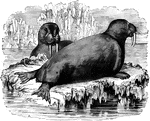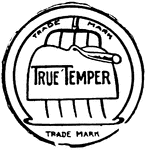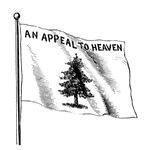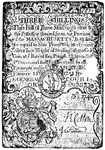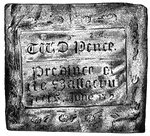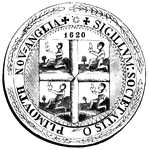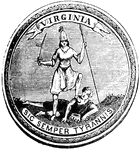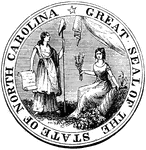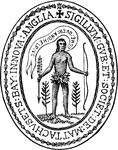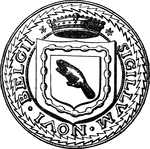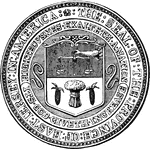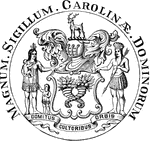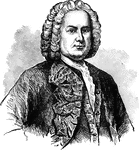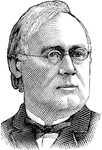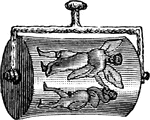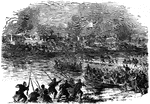
The Forlorn Hope
"'The Forlorn Hope.' Volunteers storming party, consisting of portions of the Seventh Michigan and Nineteenth…

Civil War Musical Entertainment
"Extempore musical and terpischorean entertainment at the United States arsenal, Baton Rouge, La., under…

Common Seal
"The ground-color of the hair or skin, when this animal is alive and dry, is pale whitish-gray, with…
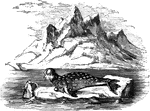
Hooded Seal
"Also called the Crested Seal, remarkable for possessing, about two inches from te extremity of the…
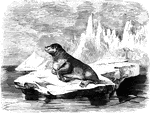
Sea Bear
"It is the size of a large bear; girth at the sholder, five feet, near the tail, twenty inches; fur…

Grand Skedaddle
"The 'Grand Skedaddle' of the inhabitants from Charleston, S. C., when threatened by an attack from…

Banks Expedition
"The Banks Expedition- scene on the hurricane deck of the United States transport North Star-…

Fort Stevens
"The operations near Washington, scene of the fight in front of Fort Stevens, July 12th-13th, 1864.…

Funeral Cortege
"The funeral cortege, at boston, Mass., of the Sixth Massachusetts soldiers killed at Baltimore. The…
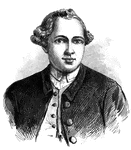
Joseph Warren
"Joseph Warren, of Boston, the idol of Massachusetts, was shot while leaving the redoubt of the Battle…
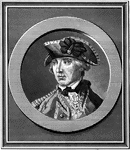
General Howe
"General Howe, commander of the British troops, left Massachusetts on March 17, 1776."—E. Benjamin…

Charles Sumner
"Charles Sumner was a United States Senator from Massachusetts involved in the fight for Kansas."—E.…

Pine-Tree Shilling
The Pine-Tree Shilling. This is a fac-simile of the first money coined in America. The mint-master,…
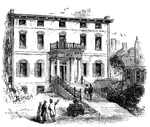
Province House
"The Province House. The Province House, the residence of the colonial governors, is still standing,…
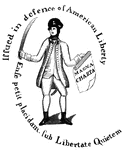
Treasury Note
"Reverse of a Massachusetts Treasury note. This is a fac simile of the device on the back of one of…

Bergylt
"Is twelve to twenty-four inches long; found in the northern seas, south to the coast of Massachusetts;…

Plaice
"Weighing six to twelve pounds; it feeds on mollusca, crustacea, and young fish; inhabits sandy banks…
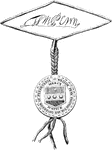
Penn's seal and signature
"Penn's Seal and Signature. This is a representation of the seal and signature of William Penn attached…
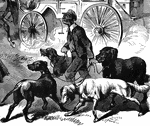
Man Walking Dogs
"Man walking dogs in the 'Grand Skedaddle' of the inhabitants from Charleston, S. C., when threatened…

Grand Skedaddle - Families with Luggage
"The 'Grand Skedaddle' of the inhabitants from Charleston, S. C., when threatened by an attack from…
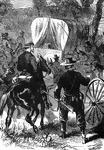
Grand Skedaddle - Detail of Wagons
"The 'Grand Skedaddle' of the inhabitants from Charleston, S. C., when threatened by an attack from…
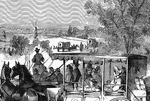
Grand Skedaddle - Horse-drawn Carriage
"The 'Grand Skedaddle' of the inhabitants from Charleston, S. C., when threatened by an attack from…
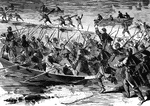
The Forlorn Hope
"'The Forlorn Hope.' Volunteers storming party, consisting of portions of the Seventh Michigan and Nineteenth…

The Forlorn Hope
"'The Forlorn Hope.' Volunteers storming party, consisting of portions of the Seventh Michigan and Nineteenth…
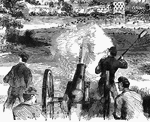
Battle at Dam No. 4
"Battle at Dam No. 4, Potomac River, between Butterfield's brigade and a large Confederate force. A…

Battle at Dam No. 4
"Battle at Dam No. 4, Potomac River, between Butterfield's brigade and a large Confederate force. A…

Apollo Room
"The Apollo Room. The room used for public meetings is in the rear building of the old Raleigh tavern…

William Tryon Seal
"Seal and signature of Tryon. William Tryon was a native of Ireland, and was educated to the profession…
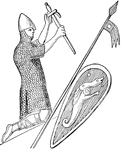
William the Conqueror
"William the Conqueror (1066-1087), as represented on his seal. Although William really ruled 'as king…

Passenger Train
"The first passenger locomotive built in the United States. A year after the Enterprise sailed for India,…
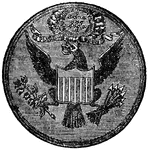
Eagle on Seal of United States
"The Eagle is a gold coin of the United States, value $10; half-eagle, $5; quarter-eagle, $2.50, double…
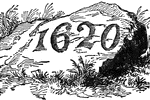
Plymouth Rock
"Plymouth is a town and county-seat of Plymouth co., Mass.; on Plymouth Bay, 37 miles S. E. of Boston.…

Hooded Seal
"The Seal, of the family Phocidæ, or seal tribe, are, of all four-limbed mammiferous animals,…

Faneuil Hall
A spacious public hall in boston, Massachusetts, erected in 1742 by Peter Faneuil and presented by him…
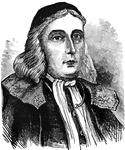
William Stoughton
Lieutenant Governor of Massachusetts and involved in the Salem Witchcraft trials. He became acting governor…
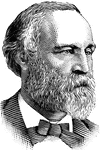
Henry L. Dawes
(1816-1903) U.S. Senator from Massachusetts and editor of the Gazette and the Transcript.
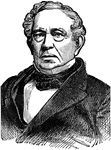
Edward Everette
"This distinguished American was born in 1794, at Dorchester, near Boston, Massachusetts, entered Harvard…
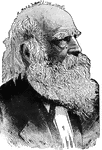
William Cullen Bryant
"This famous poet and journalist was born in Cummington, Hampshire County, Massachusetts." —The…

Horace Mann
An American education reformer and abolitionist. He was born in Franklin, Massachusetts. He was brother-in-law…
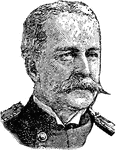
Nelson Miles
A soldier born in Wesminster, Mass., Aug. 8, 1839; died May 24, 1908. He studied in his native town…

Dwight Moody
An American evangelist and publisher who founded the Moody Church, Northfield School and Mount Hermon…
